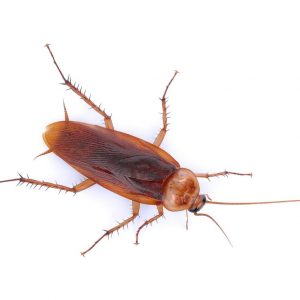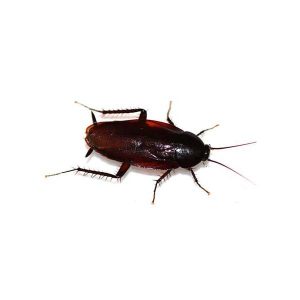Surinam Cockroaches in Georgia
Surinam roaches have black or brown bodies and olive or brown almost transparent-looking leathery wings. The area directly located behind the head (pronotum) is very shiny and black or dark brown in coloration. This is one of the reasons these roaches are oftentimes confused with smokybrown and oriental cockroaches. Surinam roaches are not more than about 1 inch in length. Surinam roaches do not need males to reproduce. This means the female can reproduce asexually through a process called parthenogenesis (when the female can have babies without the need of sperm/fertilization).
Surinam Cockroach Habitat
Surinam roaches are most commonly found outside. They are not home infesting roaches. They like warm damp soil, such as that found in a greenhouse, which is what earned them the common name “greenhouse roaches.” Outside, these roaches can be found under soil, rocks, leaf piles, debris, woodpiles, etc. The most common way these roaches get inside is when you bring in potted plants for the winter. They are usually hiding down in the soil and emerge when brought into the warm home because they think the weather is warming up. These roaches can also find their way inside through unsealed entry points around the home.
Surinam Cockroach Behaviors, Threats, or Dangers
These roaches burrow into the soil and feed on plant roots or stems. They are pests in gardens, greenhouses, and lawns. Indoors, these roaches should not be a major problem. If these roaches do happen to find their way into your home they will not survive for very long. They need warmth and high humidity for survival. They may make their way to bathrooms in search of moisture, but even in the bathroom, they will not survive. They are usually nocturnal, so you may not see them until they are dead somewhere in the home. Always contact your local pest control experts for assistance in getting rid of roaches.






